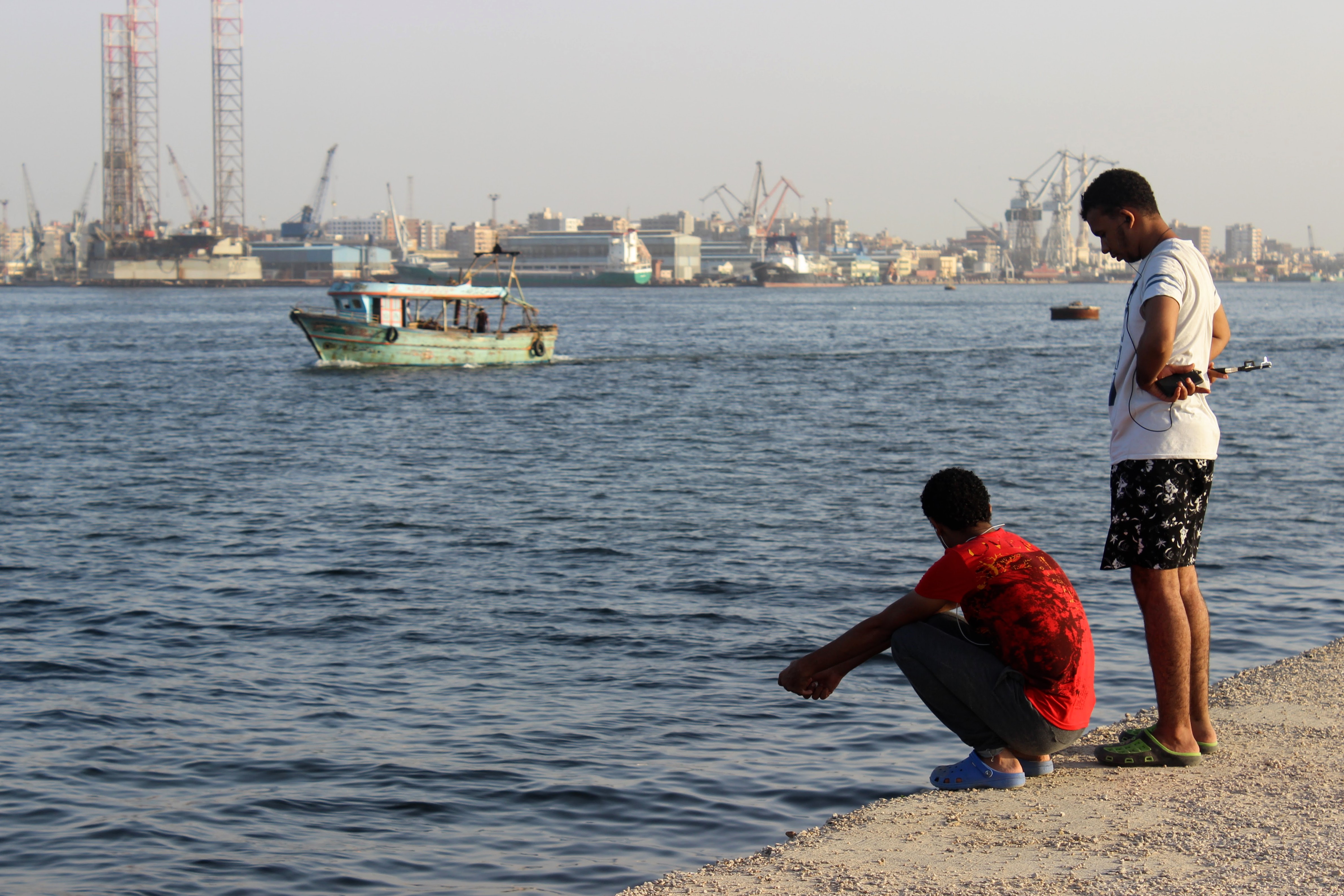Two young men stare at the water flowing by. An only apparently bucolic scene: right away, cranes and heavy equipment peer out in the background. A rusty boat proceeds falteringly in the stream. The waterway that opens up in front of the two bystanders is the Suez Canal, inaugurated in 1869 with great pomp and circumstance. The shore on which they stand belongs to the municipality of Port Said, founded in 1859 as a worksite for the laborers who had gathered on the northern Egyptian shore to partake in the digging and earn their bread.
The history of Port Said is ironic. At first, a great flush of optimism invested the brand-new city. “It projected faith in the future,” some declared. It was bound to become the center of human solidarity, others proclaimed. Some swore that its prosperity was assured and that it was a commercial city called upon a great destiny. Others predicted that it would rival the main commercial cities of the Mediterranean and that it would undermine Alexandria’s trade. It should not be forgotten, someone wrote, that Port Said was “destined to become a big city of trade with a humongous circulation and high-rising buildings. And yet, tremulous doubts crept in, or perhaps were always there. Those who had flocked to the isthmus were said to have had their “extravagant hope for profit” frustrated, their enthusiasm dissipated, and their weariness made acute by the imposed solitude. Predictably, the city’s beginnings witnessed hard times and delays in the works. Storms ravaged the budding township and destroyed the ships that were its only source of provisions. Everything had to be rebuilt over and over again, often with materials that were not readily available.
A motley crew of mobile individuals passed by, moved to, and ultimately contributed in shaping Port Said: not just Egyptian officials, Suez Canal Company representatives, and European consuls, but also ordinary folks migrating from the rest of Egypt and from other Mediterranean shores. They comprised, in their midst, entrepreneurs, coal-heavers, inn-keepers, missionaries, and prostitutes. Moving away from the available diplomatic or business histories, my research digs out of the archives the histories of every-day life in this port-city. It is through mundane details that I highlight the historical role played by supposedly marginal individuals in a provincial town. I thus find importance in the trivial. And I value the life-stories of ordinary individuals, such as these two men just killing time one late afternoon, just as well as the more sweeping history of the background against which they stand out.

Commentary on Rachel Tanur's Works: GW Bridge at Sunset